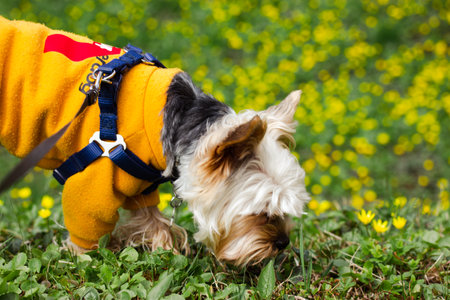1. Essential First Aid Supplies for Small Pets
Having a well-stocked pet first aid kit is crucial for handling minor injuries and emergencies at home. Below is a list of must-have first aid supplies every small pet owner should keep on hand.
Basic First Aid Items
These essentials can help you manage cuts, scrapes, or other minor injuries before seeking veterinary care.
| Item | Purpose |
|---|---|
| Sterile Gauze Pads | Used to cover wounds and stop bleeding. |
| Cotton Balls or Swabs | For gentle cleaning of small wounds or applying medication. |
| Adhesive Bandages (Non-Stick) | Avoids sticking to fur while protecting minor wounds. |
| Tweezers | Helpful for removing splinters, debris, or ticks. |
| Nail Clippers | Keeps your pet’s nails trimmed to prevent accidental scratches or breaks. |
| Dull-Tip Scissors | Cuts bandages or trims fur around wounds safely. |
Cleansing and Antiseptic Supplies
Keeps wounds clean and prevents infections.
- Antiseptic Wipes: Ideal for disinfecting minor cuts or scrapes.
- Sterile Saline Solution: Safe for flushing out eyes or rinsing wounds.
- Povidone-Iodine or Chlorhexidine Solution: Used as an antiseptic for wound care.
- Hydrogen Peroxide (3%): Can be used to clean wounds but should be used with caution.
Meds & Emergency Treatments
Certain over-the-counter items can help manage common emergencies until you get professional help.
- Styptic Powder or Cornstarch: Stops minor bleeding from nail trims or small cuts.
- Aloe Vera Gel: Soothes minor burns or skin irritations.
- Pain Relief Gel (Vet-Approved): Helps with discomfort but always consult your vet first.
- Dose-Appropriate Syringe: Useful for administering oral medications or fluids if needed.
- Benedryl (Diphenhydramine): May help with allergic reactions—check proper dosage with your vet.
Additional Essentials for Emergency Situations
- Pill Cutter & Pill Pockets: Makes giving medicine easier for pets who resist pills.
- Muzzle (Soft and Adjustable): Prevents biting during stressful situations without harming your pet.
- Towel or Blanket: Useful for wrapping an injured pet to keep them calm and warm.
- An Emergency Contact List: Includes your vet’s number, the nearest emergency clinic, and poison control hotline.
A well-prepared first aid kit ensures youre ready to handle minor injuries and unexpected situations at home. Keeping these supplies in an easily accessible location can make all the difference when quick action is needed.
2. How to Handle Common Pet Injuries
Accidents happen, and knowing how to provide first aid for your small pet can make a big difference before you get to the vet. Below are step-by-step instructions on treating minor cuts, burns, sprains, and insect bites at home.
Minor Cuts and Scrapes
Step 1: Stay Calm and Assess the Wound
Keep your pet calm and check the injury. If bleeding is severe, apply pressure with a clean cloth.
Step 2: Clean the Wound
Use lukewarm water or a saline solution to rinse away dirt. Avoid using hydrogen peroxide as it can delay healing.
Step 3: Apply an Antiseptic
Dab a pet-safe antiseptic onto the wound to prevent infection.
Step 4: Cover if Necessary
If the wound is in a high-contact area, apply a non-stick bandage. Change it daily.
Burns (Mild)
Step 1: Cool the Area
Run cool (not ice-cold) water over the burn for several minutes.
Step 2: Apply Aloe Vera or a Pet-Safe Ointment
Aloe vera gel can help soothe the burn. Avoid butter or human creams.
Step 3: Prevent Licking
Your pet may try to lick the burn. Use an e-collar if needed.
Sprains and Strains
Step 1: Limit Movement
Encourage rest by keeping your pet in a confined space.
Step 2: Apply Cold Compress
Wrap ice in a cloth and apply it to the injured area for 10-15 minutes.
Step 3: Monitor for Swelling or Pain
If your pet continues limping after a day or two, visit the vet.
Insect Bites and Stings
| Symptom | Treatment |
|---|---|
| Mild swelling or redness | Apply a cold compress for relief. |
| Pain or itching | Dab with a baking soda paste or diluted apple cider vinegar. |
| Severe swelling (face/throat) | Seek emergency veterinary care immediately! |
Tip:
If you suspect an allergic reaction (excessive swelling, difficulty breathing), take your pet to the vet right away.
![]()
3. Recognizing Emergency Situations
As a pet owner, knowing when your small pet needs immediate veterinary attention can make all the difference in an emergency. Some situations require urgent care, and recognizing these signs early can save your pets life. Below are key emergency situations and how to identify them.
Choking
If your pet is choking, they may paw at their mouth, gag, or have difficulty breathing. In severe cases, they may collapse due to lack of oxygen.
Signs of Choking:
- Pawing at the mouth
- Coughing or gagging
- Difficulty breathing
- Blue-tinged gums
- Panic or distress
What to Do:
If your pet is still breathing, allow them to try and dislodge the object on their own. If they cannot breathe, you may need to perform a modified Heimlich maneuver by applying gentle but firm pressure behind their ribcage. Seek veterinary help immediately.
Seizures
A seizure can be frightening for both you and your pet. Seizures may be caused by epilepsy, toxins, or underlying health conditions.
Signs of a Seizure:
- Uncontrollable shaking or convulsions
- Dazed or disoriented behavior before or after
- Losing consciousness
- Paddling motions with legs
- Drooling excessively
What to Do:
Stay calm and keep your pet away from objects that could cause injury. Do not try to restrain them. Once the seizure stops, comfort your pet and call your vet immediately.
Poisoning
Pets can ingest toxic substances such as household cleaners, certain human foods, and plants. Recognizing poisoning symptoms quickly is crucial.
| Toxin Type | Common Symptoms |
|---|---|
| Household Cleaners | Drooling, vomiting, difficulty breathing |
| Certain Foods (e.g., chocolate, grapes) | Lethargy, vomiting, diarrhea, seizures |
| Toxic Plants (e.g., lilies for cats) | Mouth irritation, kidney failure symptoms |
| Pesticides & Rodenticides | Tremors, internal bleeding, weakness |
What to Do:
If you suspect poisoning, do not induce vomiting unless instructed by a vet. Contact your veterinarian or an animal poison control center immediately.
4. CPR and Basic Life-Saving Techniques for Pets
In a critical situation, knowing how to perform CPR and rescue breathing on your small pet can be lifesaving. If your pet is unconscious and not breathing, follow these steps carefully.
Step 1: Check for Responsiveness
Before starting CPR, ensure your pet is truly unresponsive.
- Gently tap or call their name.
- Check for any signs of breathing or movement.
- If there’s no response, proceed to the next step immediately.
Step 2: Open the Airway
A blocked airway can prevent effective rescue breathing.
- Lay your pet on their right side on a flat surface.
- Extend their head and neck slightly to create a straight airway path.
- Open their mouth and check for obstructions; remove any visible objects with care.
Step 3: Perform Rescue Breathing
If your pet is not breathing but has a heartbeat, start rescue breathing.
- Close your pet’s mouth gently.
- Create a seal around their nose with your mouth (for very small pets, cover both nose and mouth).
- Breathe gently into their nostrils until you see their chest rise.
- Give one breath every 4-5 seconds and check for normal breathing after every few breaths.
Step 4: Check for a Heartbeat
If your pet has no pulse, you will need to start chest compressions along with rescue breathing.
- Feel for a heartbeat by placing two fingers on the left side of their chest behind the front leg.
- If no heartbeat is detected, begin CPR immediately.
Step 5: Perform Chest Compressions
The method of chest compressions depends on your pets size:
| Pet Size | Compression Method |
|---|---|
| Tiny pets (under 10 lbs) | Use your thumb and fingers to gently squeeze the chest from both sides. |
| Small dogs & cats (10-30 lbs) | Place one hand over the heart area and press firmly but gently using one hand. |
| Larger small pets (over 30 lbs) | Use both hands, placing them over the widest part of the chest and pressing downward firmly. |
Step 6: Continue CPR in Cycles
The recommended cycle consists of 30 chest compressions followed by two rescue breaths. Repeat this pattern continuously until your pet starts breathing or veterinary help arrives.
When to Stop CPR
- Your pet starts breathing independently.
- You detect a strong heartbeat and normal circulation returns.
- A veterinarian takes over care.
- If after 10-15 minutes there is no response, chances of recovery are very low, but consult a vet as soon as possible.
Important Tips:
- Avoid excessive force—small pets have delicate ribcages that can fracture easily.
- If possible, have someone call an emergency vet while you perform CPR.
- The sooner you act, the better the chances of survival!
By learning these basic life-saving techniques, you can be prepared to help your small pet in an emergency situation. Always follow up with a veterinarian after performing CPR or rescue breathing to ensure your pet gets proper medical attention.
5. Preventing Accidents and Keeping Your Pet Safe
Keeping your small pet safe at home is just as important as knowing how to respond in an emergency. Many household hazards can be avoided with a little preparation and awareness. Here are some helpful tips to minimize risks and create a safer environment for your pet.
Common Household Hazards
Small pets are naturally curious, which can sometimes lead them into dangerous situations. Here are some common household hazards to watch out for:
| Hazard | Potential Danger | How to Prevent It |
|---|---|---|
| Cords and Wires | Chewing on electrical cords can cause burns or electrocution. | Use cord protectors or keep wires out of reach. |
| Toxic Foods | Certain foods like chocolate, grapes, and onions can be toxic to pets. | Store human food securely and avoid feeding unsafe items. |
| Chemicals and Cleaning Products | Ingesting household cleaners, pesticides, or medications can be fatal. | Keep chemicals locked away and use pet-safe cleaning products. |
| Tiny Objects | Pets may swallow small objects, leading to choking or intestinal blockage. | Keep small items like buttons, coins, and rubber bands off the floor. |
| Poorly Secured Furniture | Pets may climb onto unstable furniture and risk injury from falls. | Ensure furniture is sturdy and won’t tip over easily. |
Create a Pet-Safe Space
A designated area for your pet can help minimize accidents. Consider these steps:
- Select a safe room: Choose a quiet space free from hazards where your pet can stay when unsupervised.
- Add barriers: Use baby gates or pet enclosures to restrict access to dangerous areas like kitchens or staircases.
- Provide appropriate toys: Ensure toys are size-appropriate and free from small parts that could be swallowed.
- Avoid open windows: Small pets may jump or fall through open windows. Use secure screens if needed.
Avoid Outdoor Dangers
If your pet spends time outside, take these precautions:
- Shelter and shade: Provide protection from extreme weather conditions.
- No toxic plants: Many common garden plants, such as lilies and azaleas, are poisonous to pets.
- No unsupervised roaming: Keep pets in enclosed spaces or on a leash when outside to prevent accidents or encounters with other animals.
- Avoid standing water: Stagnant water sources may contain harmful bacteria or parasites.
The Importance of Supervision
No amount of preparation replaces good supervision. Always keep an eye on your pet, especially when they are exploring new environments. If you notice any signs of distress or unusual behavior, take immediate action to remove potential dangers.
An Ounce of Prevention Goes a Long Way
A few simple adjustments in your home can significantly reduce the risk of emergencies. By creating a safer environment, you help ensure that your small pet stays happy, healthy, and out of harm’s way.


